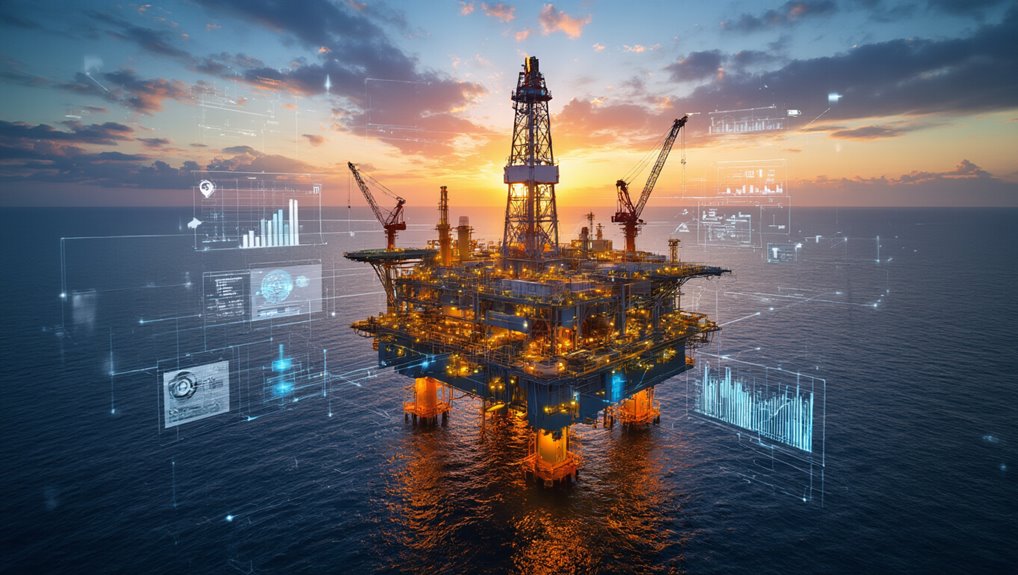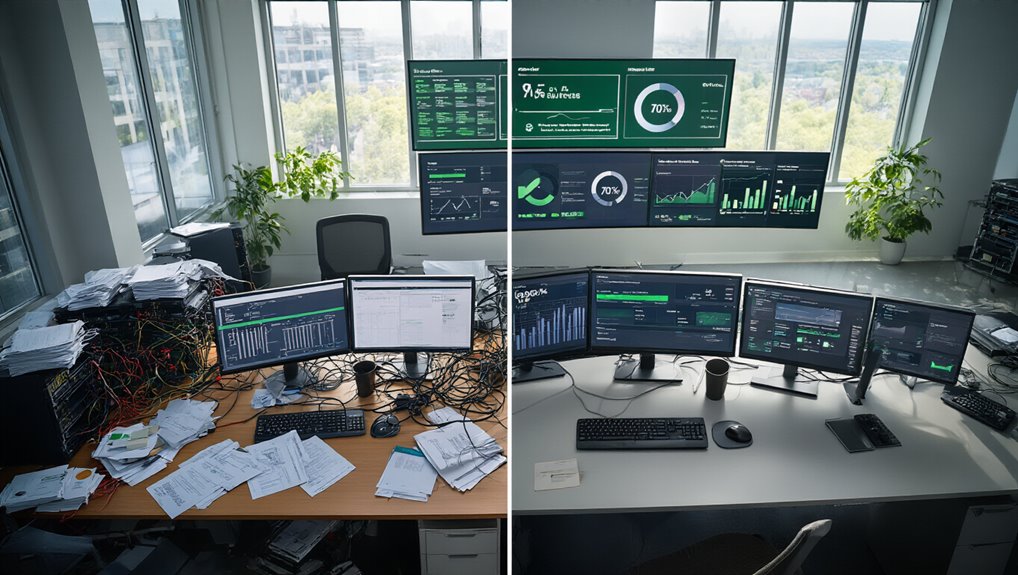As the oil and gas industry faces increasing pressure to optimize operations while reducing environmental impact, digital intelligence technologies are revolutionizing traditional practices across the value chain. The sector is experiencing unprecedented growth in AI implementation, with market value projected to surge from $7.64 billion in 2025 to $25.24 billion by 2034—a compound annual growth rate of 14.2%. This digital transformation isn’t merely supplementing human capabilities; in many cases, it’s outpacing them.
Predictive maintenance systems powered by AI algorithms are reducing equipment downtime by up to 25%. You can see this impact directly in operational continuity and significant cost savings across facilities. Machine learning models are simultaneously enhancing safety protocols through real-time monitoring of critical parameters like methane leaks, using AI-powered drones that detect issues humans might miss.
AI isn’t just supporting operations—it’s revolutionizing them with predictive maintenance that human monitoring alone could never achieve.
IoT technology and edge computing create an intelligent network of operations that processes information faster than any human operator could. Smart sensors provide continuous environmental compliance monitoring while edge computing supports split-second analysis in remote environments. This technology doesn’t replace human judgment but extends its reach and effectiveness across vast operational territories. The implementation of B2B integration has further streamlined supply chains by connecting trading partners and automating processes between them.
Automation has transformed high-risk operations by minimizing manual labor in dangerous scenarios. Automated drilling processes, including pressure drilling and pipe handling, now execute with precision that surpasses human capabilities while reducing workplace accidents. AI-powered robotics conduct inspections in hazardous areas, limiting human exposure to potential dangers. The integration of digital twin technology enables real-time virtual modeling of physical assets for enhanced maintenance and operational decision-making.
Major industry players are investing heavily in these technologies. Aramco’s deployment of a 200-qubit quantum computer demonstrates the cutting-edge innovation being applied to reservoir evaluation. Companies like Chevron, Shell, and SLB are forming strategic alliances to accelerate digital adoption. North America currently dominates the AI in oil and gas market, leading global implementation with significant investments from tech giants like Google, IBM, and C3.ai.
The digital intelligence surge in oil and gas isn’t about replacing human operators but augmenting their capabilities. The most successful implementations combine technology’s computational power with human experience and judgment—creating operations that are safer, more efficient, and environmentally responsible than ever before.









